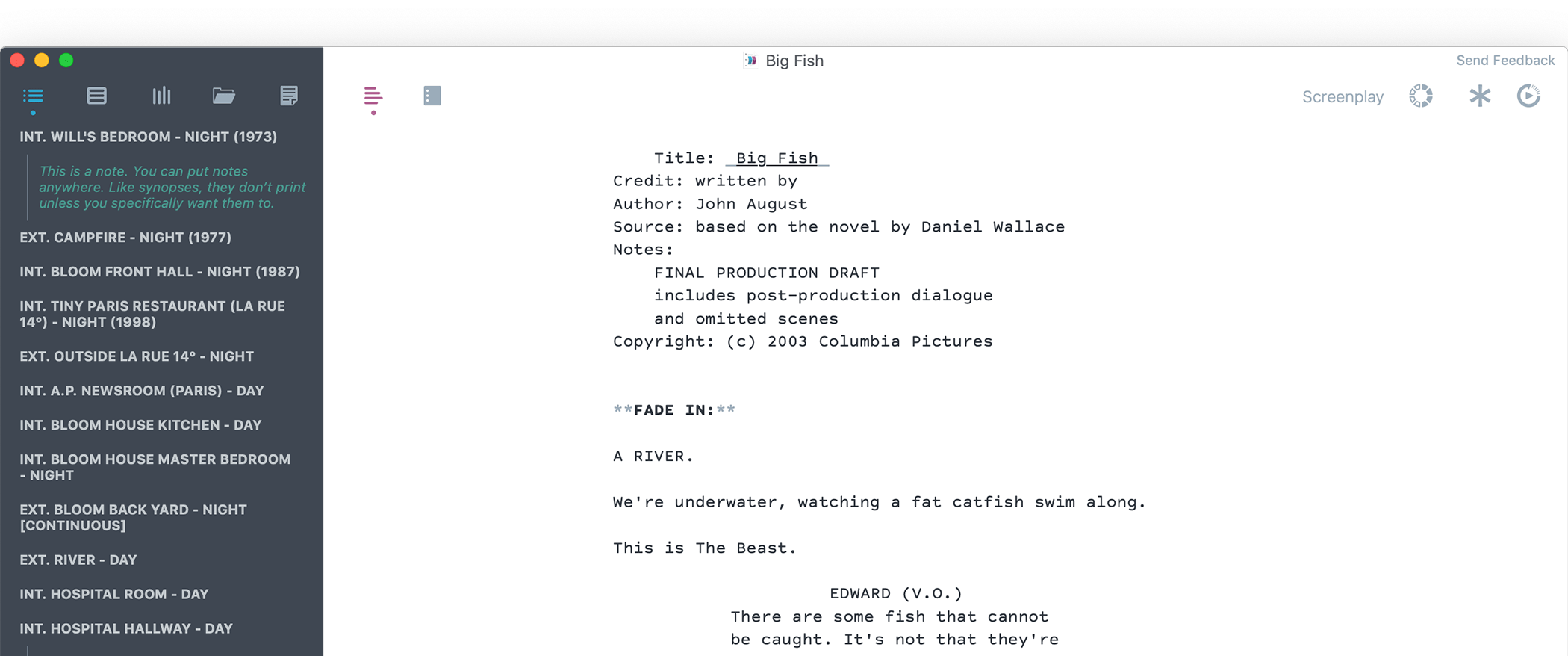


Now, if you hit ENTER again, Fade In jumps to the next line, assuming you want to write another one. Let’s type, “A lovely spring day.” Now, this is maybe not a great opening action line but it servers its purpose. Because most likely the next thing you’re going to write will be an action line. If you hit ENTER, Fade In jumps to the next line and as you can see the formatting is automatically set to “Action”. So, let’s type something, for example “INT. You see this in the Format panel in the top right corner. Now because the first thing you’re going to write will be a scene header, Fade In’s formatting is set to “Scene Heading” already. Let’s create a new screenplay by going to “File – New”. Jumping through Elements with TAB and ENTER Fade In uses pre-set formatting elements and will jump from one to the other just the way you need it in almost all cases. While you’re writing, you don’t need to worry about all of that. If you look at a finished screenplay you see that all the different elements have a specific kind of formatting, meaning where your Character names are, how much your dialogue is indented, and all that kind of stuff. In this article I’m going to demonstrate what kind of screenplay formatting elements Fade In uses to take care of the screenplay formatting for you, and how you can use them quickly and easily.


 0 kommentar(er)
0 kommentar(er)
